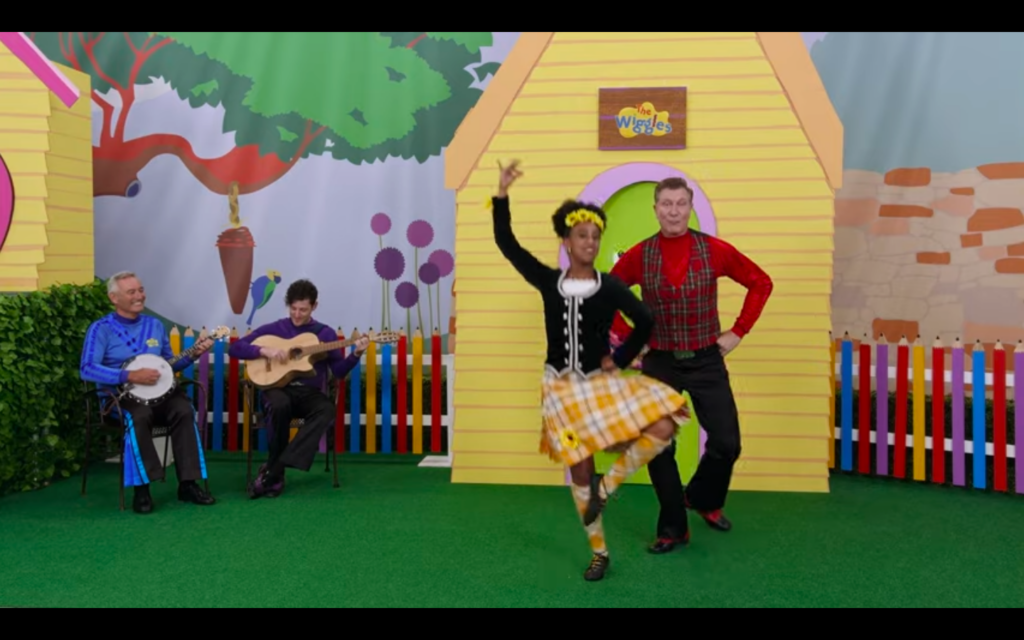Focused as I am on my favorite obscure corners of popular culture, I usually miss the really big worldwide trends. So I was completely unaware of The Wiggles until I read about them on a science fiction fandom blog.
If you too have remained blissfully unaware of The Wiggles, they’re an Australian band that released their first album in 1991. The Wiggles write and perform songs for preschoolers (and their parents); three of the four of original members of the band had degrees in early childhood education.
I did a deep dive into Wiggles subculture today. I listened to a bunch of their music. I read about how children would come to live shows dressed as Emma, the Yellow Wiggle, complete with yellow dress and yellow bow in their hair. More importantly, while watching their videos, I saw how they create developmentally appropriate live performances and videos. Yes they’re primarily entertainers (not educators), yes there are problems with what they do, but on the whole I’m impressed with the way they treat young children with respect.
As one small example of what I mean about treating young children with respect: When they begin a live performance, they do not say, “Hello, boys and girls” — a vaguely condescending formula that leaves out parents — they say “Hello, everyone.” That’s really thoughtful.
I’m also impressed with the way they’re changing with the rapidly chaning culture around them. Take, for example, their video “Di Dicki Do Dum” released last August. In the dance routine, Tsehay Hawkins, the yellow Wiggle, and Simon Price, the Red Wiggle, combine Euro-folk dance with urban dance moves. This kind of cultural mash-up is A Big Thing in the obscure world of folk dance. The venerable Cecil Sharp House in England, center of the universe for many who do Anglo-American Euro-folk-dance, now mixes all kinds of folk dance traditions:
“‘Hip-hop is the folk dance of today,’ said Natasha Khamjani…. They’re both social dances created for crowd participation, both also existing on the fringes of the mainstream, she added. Khamjani was taking a quick break during a rehearsal of a high-energy performance blending Bollywood moves and English country dancing with the unmistakable bounce of hip-hop moves.” [As reported by the BBC]
The Wiggles also make pretty darned good music. Both the singing and the accompaniment in the “Di Dicki Do Dum” video are really well done. The music has to be good. Preschoolers are going to listen to recordings of the sings over and over and over and over again. If the music sucks, parents are going to tear their hair out, and never buy any more Wiggles music or go to any more Wiggles shows.
Looking at The Wiggles videos makes me think about what we do in our Unitarian Universalist religious education programs and in our worship services. Unlike The Wiggles, we’re not in the entertainment business. But if we really want to welcome families with young children, I realized I can learn a lot from them: awareness of developmental appropriateness, respect for audiences, use of dance and movement, respectful cultural mash-ups, and so on.
Having said that, I’m now done with The Wiggles. And trying desperately to forget their songs.

